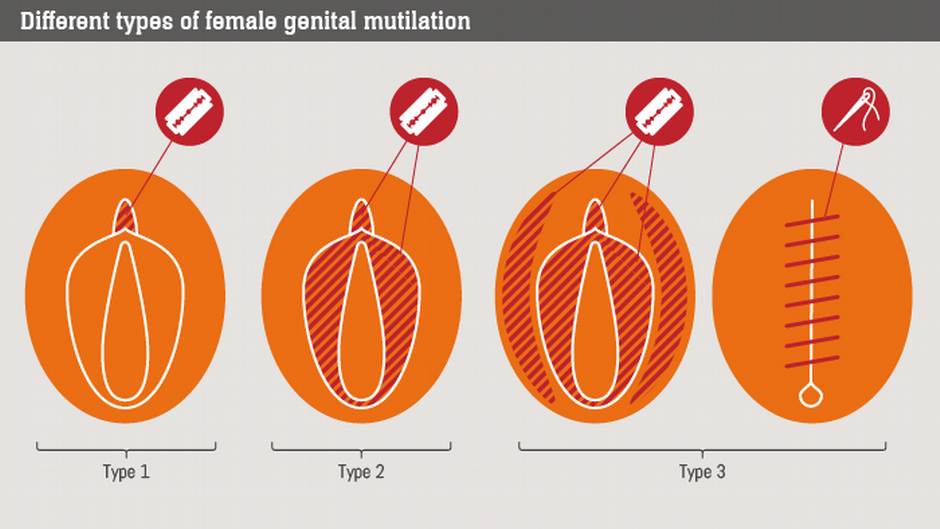The UN wants Malaysia to ban female circumcision. But that could be even more dangerous

- 1.2KShares
- Facebook1.1K
- Twitter8
- LinkedIn13
- Email26
- WhatsApp62
Just the other day, Malaysian representatives attended a high profile United Nations (UN) convention held in Geneva, Switzerland. It was the 39th session of the Convention on the Elimination of All Forms of Discrimination against Women (CEDAW) Committee, where they discussed all issues faced by women around the world. But when it came to something called FGM, the Committee straight up told us to end the practice in Malaysia.
FGM, otherwise known as Female Genital Mutilation, is exactly what the name implies. In its least scary form, some refer to it as female circumcision, which usually involves cutting and removing a part of a girl’s private parts for religious reasons.

But in today’s times, many nations want FGM to take a back seat.
“There are six members on this committee from Organisation for Islamic Cooperation (OIC) countries — all our countries are not practising FGM.” – Naéla Gabr, Vice-Chairperson of CEDAW, quoted from Malay Mail Online
So why is Malaysia still practicing it when so many other countries (especially Muslim ones) are not? And why is it important to the UN Committee for Malaysia to cut it out? We must first take a closer look at what FGM really is.
FGM was declared a human rights violation, but it’s still legal in Malaysia
FGM is defined by the World Health Organisation (WHO) as all procedures involving partial, or total removal of the external female genitalia, or other injury to the female genital organs for non-medical reasons. Before we go any further, for our kind readers who aren’t familiar with the basic anatomy of the outer female reproductive organs, here’s a helpful diagram for you.
Now that that’s settled, here’s how the types of FGM are classified:

As you can see, the difference between the types are simply the portions of the genitals that are cut, but Type 3 takes the procedure a degree higher. After cutting away most of the parts, the entire vagina is almost sewn shut, leaving only a small opening for urination and menstruation. The vagina can be opened again before sexual intercourse and giving birth, and in some severe cases, it is sewn closed again afterwards.

Another category not included in the diagram is Type 4, which includes “all other harmful procedures to the female genitalia for non-medical purposes” like pricking, piercing, and scraping. Basically, everything else falls under Type 4. But no matter which type, FGM is internationally recognised as a violation of human rights, and was denounced by the UN in 2012.
“… female genital mutilations are a harmful practice that constitutes a serious threat to the health of women and girls, including their psychological, sexual and reproductive health.” – quoted from UN 67th session General Assembly report
But despite this, FGM is not illegal in Malaysia, in fact…
It’s “wajib” and the gomen wants to develop guidelines for it

The practice of FGM here is predominantly (if not completely) a Muslim one. In 2009, the Fatwa Committee of the National Council of Islamic Religious Affairs ruled that FGM is compulsory/ “wajib“/ should be observed. According to SOSCILI, the official website of the Mufti of Federal Territory has brief guidelines for it, and even warns to not cut too much of the genitals. Even our Thailand neighbours practice it to some degree, but the question on our minds are: Why?!
“You must peel a banana before you can eat it. And for women, it will reduce their wildness, making them clean and strong.” Imam Abdullah Abu-Bakr of the Committee of Islamic Council of Yala, quoted from Al Jazeera
Ok, that quote might be a little too colourful, but that’s essentially the case. Based on accounts on multiple articles, it is done to lower a woman’s sex drive, and prevent them from giving in to temptations. But almost all the time, it is usually done when the girl is still a baby, sometimes shortly after they are born. Supporters of FGM say Malaysia’s practice is different from the rest of the world, and should not be group with the extreme FGMs.

“I just take a needle and slit off the top of the clitoris, but it is very little. Just one millimeter.” – Dr. Mighilia, Obstetrician and gynecologist of the Global Ikhwan private clinic , quoted from VICE
“Most of the time the circumcision is a needle prick to the clitoris and, in other clinics, when people do cut it off, they just cut off one to two millimetres and it has no bearing on sexual pleasure.” – Dr. Ariza Mohamed, Obstetrician and gynecologist at KPJ Ampang Puteri Specialist Hospital, quoted from RUOM
The thing we found difficult to ascertain, was how widespread the practice really is the country. Many articles report over 90% of Malaysian Muslim women to be circumcised, however many are actually quoting this study with around 1,500 respondents, although doesn’t say which part of Malaysia the ladies are from.
Other studies (like this and this) also found a high number of circumcised women, but they focused on the northern part of Malaysia. Asking around (embarrassingly), it doesn’t seem to be common practice, at least according to our Muslim friends. Perhaps it’s one of those rural vs urban kinda thing, or maybe its the taboo nature of the topic.
The wajibness of female circumcision is still a matter of debate to its opponents. Supporters say Islam supports it, but others like Syarifatul Adibah from women’s rights NGO Sisters In Islam, think that’s a skewed interpretation brought on by Islamisation. As far as the officials are concerned, its an issue that needs to be discussed. The Ministry of Health (MOH) has even called for the practice to be standardised, because the fact is…
Some FGM opponents disagree with the practice, but… they don’t want to ban it?

Based on popular (scientific) consensus, FGM brings no medical benefits whatsoever, rather it can cause potential harm and complications, like scarring and pain during urination or sex. In rural areas, the procedure is sometimes carried out by midwives instead of doctors, using makeshift tools like scissors and nail clippers. So health wise, it’s concerning to some that the practice is putting young girls at “unnecessary” risk. Despite that, many believe making it illegal will not solve the problem.
One of them is Dr. Abdul Rashid Khan, who has studied FGM in rural areas. He believes that because it is driven by religious beliefs, banning it would only drive the practice underground and make the health risks WORSE. What people like Dr. Khan suggest, is a multidisciplinary approach: A doctor carries out a symbolic procedure, while religious leaders address the symbolism of the practice.
“Prohibition is not going to get rid of the practice; if Muslims can’t do it one way, they will find another way to do it.” – Suri Kempe from Sisters in Islam, quoted from Pri.org
Saira Shaheem from the United Nations Population Fund in Kuala Lumpur told VOA News that Malaysian religious authorities actually did not define the circumcision procedure clearly, which makes it dangerous because when it comes to what and how much to remove, it would be subject to individual interpretation by practitioners.
Saira is working with the Fatwa Committee to make the practice in line with WHO guidelines, with enough luck, they hope to replace the cutting with just a routine alcohol swab of the genital area.
Could this be a Malaysian solution to a global problem?
With the possibility of a middle ground, an outright ban would seem an insensitive decision to Malaysian Muslim culture. As Dr. Khan puts it quite straightforwardly:
“The problem with the West is that it’s just so judgmental. Who the hell are you to tell us what to practice and what not to practice? A lot of women now do it in private clinics in safe conditions, but if you’re going to make it illegal, the practice will just go underground.” – Dr. Khan, quoted from Bustle

If we eventually find a solution that satisfies both opponents and supporters of FGM/female circumcision, it would not be the first time a Malaysian problem was solved by unique innovation. In case you didn’t know, the SMART tunnel was actually built as a flood control canal which also functions as a road. Worldwide, this dual function of the tunnel was actually an innovation that was the first of its kind, earning many praises and even an episode in a National Geographic documentary.
Malaysia might be unique in its problems, but at the same time, it seems to also breed opportunities to create equally special solutions. Maybe like the hybridised functions of SMART tunnel, we will be able to find a solution of FGM too.
- 1.2KShares
- Facebook1.1K
- Twitter8
- LinkedIn13
- Email26
- WhatsApp62



